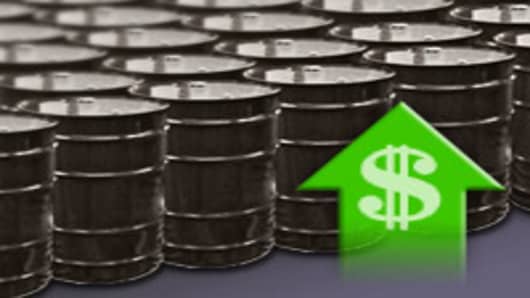Oil near $120? Don't be surprised. We've said it over and over again and today it's true once more.
The falling dollar continues to drive skyrocketing oil prices to a new orbit. The weaker dollar makes oil -- which is denominated in U.S. dollars -- more valuable, particularly to foreign investors. Oil has hit new records for the past six out of the last seven trading sessions.
Tuesday morning, prices popped another $2 to an all-time high very close to $120 a barrel, as the dollar fell to a new low against the euro. Momentum trading in this "buying-begets-buying" kind of market environment coupled with today's expiration of the May crude futures contract could have oil prices striking that next threshold by the close.
Until the dollar finds a floor, most bets are that oil prices will continue to soar. The euro rose to a new record against the dollar, breaking through the important psychological threshold of $1.60. While it took about five months for the euro to run up from $1.40 to $1.50, it only took two months to go from $1.50 to $1.60. So how soon before the euro breaks the next big barrier -- soaring to $1.70?
"It could happen in the same amount of time," says University of Maryland professor Peter Morici, former chief economist of the U.S. International Trade Commission.
The dollar drag, he says, is a result of the lack of confidence in U.S. economic policy and the trade deficit. The trade deficit, in turn, is due in part to the rise in the price of oil.
"The U.S. oil import bill hasn't even been fully realized and that will put further pressure on the dollar," he said.
With the spike in oil prices, Morici says the oil import bill for first two months of the year was averaging an annual rate of about $400 billion vs. $300 billion a year ago. It's a vicious cycle, it seems. And the result will be brutal for U.S. consumers, further dollar weakness and a sharp euro rally could send oil prices to a new dimension.
Questions? Comments? energysource@cnbc.com



